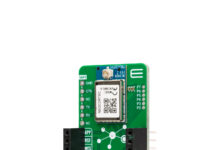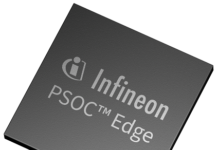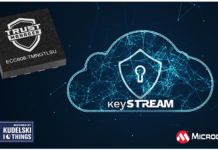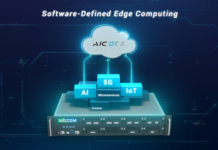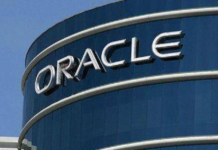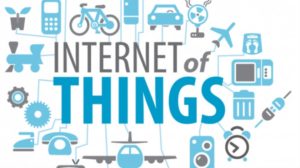
The Internet of Things (IoT) is forever changing the way people think, how they react, and what they want at their fingertips. IoT technology dives deeper into inter-connected data and sensing habits of consumers, inanimate objects, humans, and even animals with the ability to transmit data without human-to-computer or human-to-human interaction. This data is collected, assessed and then autonomously reacted to by IoT technology. From vehicles that use GoToMeeting to let you know you are running late for a meeting suggesting you take the meeting in the car, to activating your home security system. The Internet is a buzz with activity and IoT takes advantage of it all. So, what will connectivity’s data flow of the Internet of Things mean for the world? How will it affect the way businesses and consumers use the Internet?
The world has lunged into an age of smart technology that immediately delivers information in seconds. Smartphones can do just about anything with apps, from controlling televisions to editing photos like a pro. Cars are able to sense changes in road conditions and respond accordingly, or call for emergency roadside assistance. Consumers have become accustom to the ease of life via Internet technologies and insist all things in life that can be convenient, do just that.
To learn more about US manufacturers’ present status of IoT, Pricewaterhouse Coopers (PwC) took a survey for insight on their behaviors. The focus of their research was, are they behind, on target, or ahead of the serious game of inter-connectivity technology? What are manufacturers doing, or not doing with data-driven technology? What plans are in play to bring their business to the expectations of consumers?
PwC findings resulted in 3 categories for manufacturers respectfully:
- Early adopters – Internet of Things understanding, currently using smart sensor technologies to use collected data manufacturing and operational processes.
- Sideliners – Have knowledge of the IoT and may or may not have implemented some smart sensor technologies.
- Waders – Are aware of the IoT, in the beginning stages of planning to adopt smart sensor technologies.
If companies are to keep up with what consumers have come to expect as main-stream and want, they are forced to implement IoT technologies into their products and services. It is a sink or swim era for businesses, they must find and collect consumer inter-connected data, build an IoT ecosystem and execute an IoT strategy.
- Data Digging and Collecting – deploy smart sensor technologies to find, collect and measure data.
- IoT Ecosystem – Cost effective solutions are rapidly emerging putting small to medium sized businesses in a fairer competitive arena.
To convey an innovative and transforming change that will enhance our lives, we humans put a name on it, as is the case with Internet of Things. Inter-connectivity technologies by many analysts, is changing life forever. The world is in an era that is moving toward all things the imagination can dream up being automated. It is all about improving quality of life.
The Internet of Things’ goal is to connect every day physical objects via the Internet and be identified to other devices. Technopedia shares how this method of communication is closely related to radio frequency identification (RFID) and includes other technologies such as sensory, wireless, or QR codes.
What does inter-connectivity mean? It is simple; connect any device to the Internet, and/or each other with an on/off switch. Smartphones have had this capability and have been using it for years. Vehicles already have inter-connectivity technology that has an advantage in the IoT arena. Gaming equipment’s inter-connectivity puts a player in a 3D battlefield with real-time teams and opponents. From coffee makers to headphones to Google searches to washing machines and garage doors, or a public transit bus telling you how close the next stop is. These are all “things” of the IoT. The possibilities for products to have smart IoT technology are only limited to the world’s imagination.
Galen Gruman of Infoworld says the IoT is simply an environment gathering information from devices and/or applications with a sensor and in turn reacting. Smartphones, computers, traffic lights, and vehicles are all good examples of products that have been using inter-connectivity technology for years.
Coca Cola, though the phrase “Internet of Things” hadn’t evolved yet, was the first example of IoT. A coke machine, according to WhatIs.com that could communicate with devices at Coca Cola telling a person if a cold coke would be waiting when they went to the machine was placed at Carnegie Melon University during the early 1980s.
Patrick Thibodeau of ComputerWorld says it is the sensors that make the Internet of Things almost human. The sensors monitor and register any changes in environments, collect the data and when it communicates with the actuators IoT occurs. Take a smartphone for instance. The microphone and camera are the sensors transmitting interesting collected data and transforms it into electrical energy; and the speaker and the screen are the actuators transforming the data into interesting and useful energy.
As the evolving world of the Internet of Things innovations expand, sensors and actuators inter-connectivity continues to grow. USINEX, The Advanced Computing Systems Association explains sensors and actuators in this “The Internet of Things and Sensors and Actuators” video.
The ecosystems of intelligent systems have opened opportunities for businesses to provide new innovative ways within their products and services to enhance the quality of life for the consumer. Whether it be improving customer loyalty, improving product design, optimizing production, improving service or reducing costs by managing warranty and recalls more effectively, IoT has a significant role to play in digital business transformation. With IoT, the concept of connected economy and “servitization” has become real and the products have a higher service component than ever before.
IoT can be your competitive differentiator in the market. It’s not if you can implement these solutions and when, but how fast can you launch at a global scale, in a secure and compliant manner. However, as businesses become more connected, managing the information flow between people, systems and things becomes more complex.
In fact, it is quite hard and is not the focus of most businesses. In addition to being a challenge, it is expensive to manage and maintain. Using a purpose-built solution – a secure, scalable platform, to support the robust messaging and orchestration that IoT depends on – can alleviate these challenges.
What will the Internet of Things evolve towards in the future? The answer to this question is, possibly everything. If a person can think it, IoT technology can create it. Read our white paper to learn more about The Covisint Platform for Enabling IoT Solutions.
By Brad Schechter
Source: www.covisint.com



